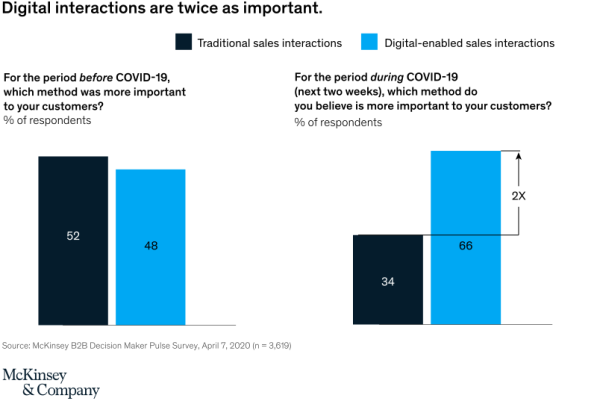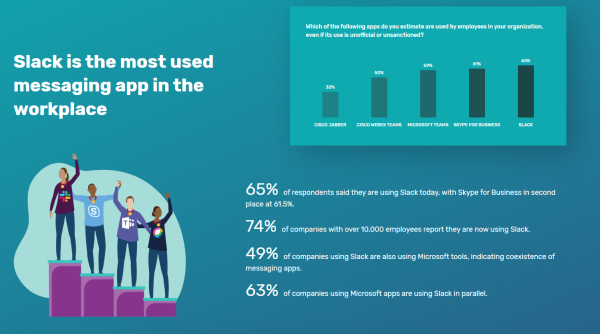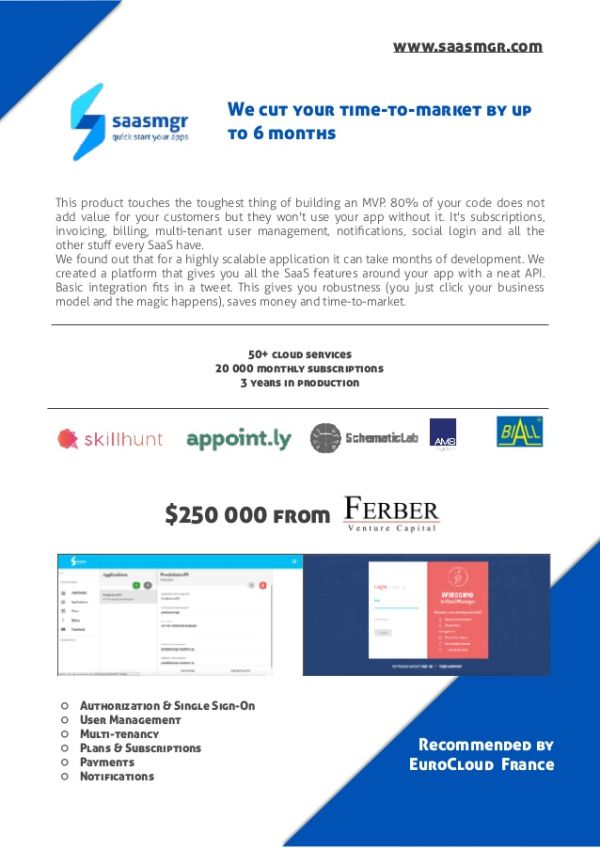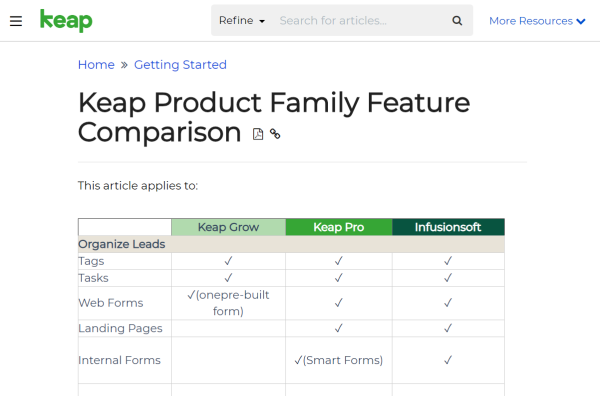Businesses are noticing changes in buying and selling patterns. A report by McKinsey & Company notes a steep increase in the importance of digital interactions and enablement for sales leaders across B2B & B2C companies.

If you want your product and brand to stand out among competitors, you need to make the most of the marketing qualified leads (MQLs) that you have. According to the 2018 “Sales Enablement Report” by CSO Insights, the percentage of salespeople achieving quota improved by 10.6% using sales pages and other content resources alongside their pitch.
Selling has never been easy for teams without showcasing the best features, testimonials, and explainer content powered by sales automation.
What is sales enablement?
The process of arming your sales team with the resources it needs to close deals is known as sales enablement. Think about it this way—sales enablement is the fuel to your sales engine.
Converting leads into MQLs and sales qualified leads (SQLs) is challenging. And converting SQLs to customers is an entirely different ballgame. Providing your sales teams (and prospects) with relevant content, information, quick tips, and/or tools can help.
Within this blog, I've presented the types of content, be it visual or written, that you can create to empower your sales team. Provide your sales team members with this content and see how quickly they can convert their prospects.
Bonus: I’ve also detailed how to create these awesome content assets so you can quickly get started—if you haven't already.
Types of content formats for sales enablement
Deemed a king, content not only rules the marketing aspects of your business but holds equal authority in the sales area too. As a marketer, one of your responsibilities is to update content based on the product, its features, and what good you've done with the product so far. This content can be crucial for sales enablement.
Before we get into the details of content ideas for sales enablement, let’s understand the approach behind crafting the best content framework for your documents.
Have you heard of the Golden Circle of “WHY, HOW, WHAT”?

This model is the basic frame of reference for your content marketing strategies. And frankly, it works for more than just that. Usually, people approach from “What” and end up losing business by the time they reach “Why.” In order to stand out and keep your prospects hooked, start with “Why” they need your product and work your way through “How” you could help them, all the way to “What” it is that your product does.
This is exactly how your content for sales enablement should be arranged. Don’t start with the know-how of your product or service. Give them a reason to pay attention to your pitch and you'll have a better chance at closing deals.
1. Industry report
While the industry report could be a separate copy created for a particular sales pitch, it also covers all the content on your blog that features current industry trends, comparisons, top-10 lists, and more.
Below is an example of an independent research report by a Mio that helps teams experience seamless communication across Slack, Microsoft Teams, and Webex.

Timed well with the Slack IPO, Mio published a self-research - Workplace Messaging Report covering Slack, Microsoft & Cisco. This report clearly depicts numbers using charts and graphs, and highlights data which can be crucial for converting leads.
Pro Tip: Each time you create sales enabled content on your blog or website, gate it to generate leads via a form, and automatically send them to your CRM. You can then set up a drip campaign wherein the content will be delivered and you can further nurture based on the action taken by the prospect.
So, what goes in an industry report?
- A broad industry description leading to a niche
- Details of geographic scope and products
- Market analysis with current and expected growth
- Trends and technology details
What do you need to create this?
- If you plan to do the survey yourself, create a form with all of the relevant questions that will go in the report (Pick up from a range of interactive form templates)
- A targeted database of leaders and users of your product’s category that you can source from LinkedIn
- Email marketing platform to send out the survey
- Visual content creation tools like Canva, Piktochart, and Venngage to help you put your data into visuals & engaging content.
2. Competitor analysis report
Who doesn’t love to brag about their product and back it up with facts?
That’s exactly what sales reps need to do but it needs to be done very subtly power-packed with facts. The competitive analysis report is your detailed research on how you are better than your competitors. With these reports by your side, along with the sales pitch of your product, you should be able to convince the prospects of the cutting edge of your product.
What goes into an amazing competitor analysis report?
The comparison metrics could include pricing, features, clientele, ease of use, integrations, and other add-ons. Apart from product metrics, it’s always a good idea to include some key industry mentions, product reviews, and achievements as a company.
Pro tip: While you’re making the comparison reports, make sure that you don’t dive into unnecessary details. The objective is to showcase the highlights of your product.
Competitor analysis can be put out as an infographic or a stand-alone page on your product website. Here are some of the best comparison pages from which to take inspiration.
There are no second chances when it comes to follow-up. With Keap, automating follow up ensures you’re responding to leads and client needs immediately. Try us out for free! https://t.co/mlLWZYVUl7 pic.twitter.com/fCSDOMsekZ
— Keap (@KeapGrowing) July 8, 2020
3. Informative graphics
While pitching to prospects, sales teams can drastically reduce the time to aha moment while on their demo calls by:
- Solving a typical use case of your prospect using the product
- Using content that catches their attention immediately
If done right, infographics are a great source of attracting organic traffic. Similarly, if you want to get a piece of the short attention span of your prospects, infographics are the way to go. These infographics can be used across channels to sell better, for example, showcase on demo calls, use in cold emails, and utilize in social selling.
What type of content can be included in an infographic?
It could revolve around industry trends, competitor analysis, or an overall working pattern of your product.
For a sales enablement creative, make sure that you:
- Present a clear center message
- Present appealing visuals
- Include all important stats and facts
- Avoid unnecessary details
Below is an interesting example of how SaaS Manager, a platform that helps SaaS companies reduce churn, created its sales pitch as a one-pager (infographic).

Canva, Venngage, and Piktochart can be the go-to products that will help you craft your content visually.
4. Case studies and testimonials
What would be more authentic than proof of industry giants vouching for your brand? Adding testimonials and creating case studies scales your credibility.
You can include testimonials as a quick introduction of your industry reputation, or provide case studies for a detailed analysis of what you have achieved. Case studies allow your prospects to get a deeper understanding of your way of working and your approach to tackling a problem.
A few aspects to focus on while preparing your case studies:
Handpick your customers: Case studies are a great tool if your prospect can see the use case is relevant to them. So, pick the customer who can make an impact.
Ask the right questions: In a case study, addressing the main pain point and what resolution your product has served is quite essential. So, always ask questions about the size of the company, pain points, etc.
What goes into an awesome case study?
- The overview of your customer that includes industry, size, location
- The pain points
- Your product features that helped them overcome their pain points
- Success metrics the company has achieved using your product
- Visuals of all of the above-mentioned data
Pro Tip: Case studies needn’t be restricted to written content. Video testimonials have also proven to impact a customer’s buying decision.
5. Product videos
Now that you have established why the prospect needs your product and how you've helped others achieve their objectives, it's time to show what you actually do and how you do it via a demo video of your product in action.
A good product video should:
- Be short and to the point
- Focus on the problem and solution
- Be informative
- Include relevant CTAs
Check out this product video from Cue, a customer engagement tool. It focuses on how to tackle customer abandonment issues in your online store with the help of its product. It’s short, to the point, and features neat animation.
6. How-to and explainer guides
Maintaining regular how-to guides on your blog is a good content marketing practice to attract leads. They are analogous to the product pages on your website but much more useful.
If you have successfully manifested prospects’ interest in your product, how-to guides are a perfect resource for sealing the deal.
While creating a how-to guide:
- Keep the language crisp so it's easy to understand
- Refrain from using too much jargon
- Include screenshots
For example, in this Keap Product Family Feature Comparison article, it clearly shows the features available under each product of the Keap family and it makes it easier for the prospect to choose what suits them the best.

Final thought
These ideas work in general, however, if you manage to get a clear cut idea of your audience, prepare accordingly. Some prospects skim through every small detail of your brand while some can be wooed by a simple product video. Either way, you should be prepared for any possible situation.
About the author
Archita Sharma helps B2B SaaS businesses with marketing (with a focus on content), and is currently doing so for Automate.io. She is happiest while helping founders unleash the power of content marketing and telling stories about her weekend artistic cafe visits!


